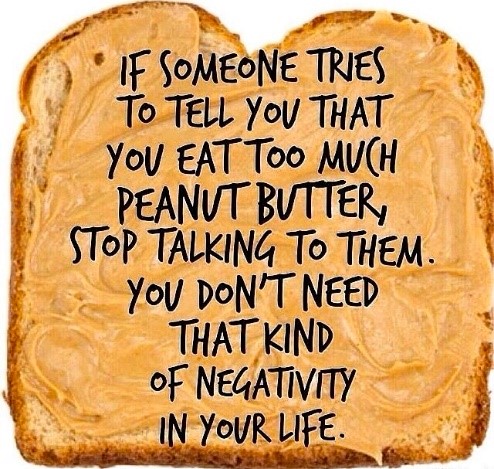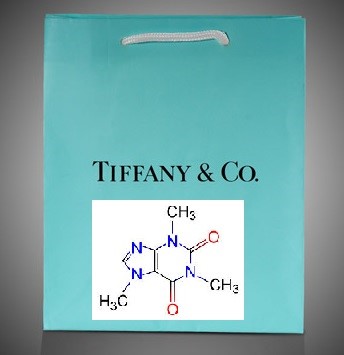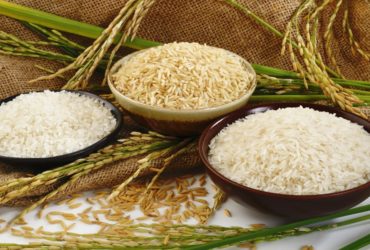BY: DANIELLE RATH
Moderating caffeine intake can be a challenge. There are some days it seems there’s not enough caffeine in the world to keep your mind focused or your eyes from drooping, and there are other days when it seems like the smallest cup of coffee makes your heart race and hands shake. I’ve studied energy drinks and the science behind their ingredients for 10 years, and I find these products fascinating. I may know a lot about caffeinated drinks, but caffeinated food – well, that’s a whole new ballgame.
According to Caffeine Informer’s caffeine database [1], there are almost two hundred different food products enhanced with caffeine, including ice cream, granola, brownies, waffles, marshmallows, jelly beans, candy, gum, jerky, and good old fashioned dark chocolate. Okay, so that last one is actually naturally caffeinated… However, the food that interests me most on the list is the caffeinated peanut butter (because hello, it’s peanut butter and it’s delicious).

https://www.pinterest.com/pin/245024035957377229/
Caffeinated Peanut Butter
Steem caffeinated peanut butter has a simple ingredient list: natural peanut butter (peanuts, salt), organic agave nectar, peanut oil, and natural caffeine from green coffee extract. As you can see this caffeinated peanut butter is not dramatically different from a typical organic peanut butter. The Nutrition Facts of Steem[2] are almost identical to that of Trader Joe’s Organic Creamy Salted Peanut Butter[3]: a two-tablespoon serving provides around 200 Calories, ~16 grams of Total Fat, ~8 grams of Total Carbohydrates, 3 grams of Dietary Fiber, 2 grams of Sugar, and 8 grams protein. Notably, the sugar content is the same even though Steem adds agave nectar to counteract the bitterness of the caffeine.

Figure 1. Nutrition Facts for Steem caffeinated peanut butter
If Steem’s caffeinated peanut butter was an energy drink, it would be about as strong as an 8-ounce Red Bull. With 75 mg caffeine, Steem would be right in line with Main Squeeze[4] and Starbucks Refreshers[5], which makes sense because they are also made with green coffee bean extract.
Not to be confused with green tea, green coffee beans are actually Arabica coffee beans that are spared from the roasting process that usually turns the beans brown and delivers the signature coffee flavor profile. Due to marketing and glamorization of “minimally processed” and natural foods, it may seem like getting caffeine from green coffee beans is healthier or more natural than other caffeine sources, but honestly once it’s in your body caffeine is caffeine is caffeine, and your body cannot tell the difference. The only variation in caffeine sources is the purity of the caffeine extracted. Caffeine anhydrous, which is found in some caffeinated food products, is pure caffeine, while caffeine from green tea is caffeine plus a small amount of antioxidants that are mixed in with the caffeine extract. So in a way it is less pure overall, but it is a good thing because you’re getting caffeine in nice package. It’s like getting a diamond ring versus getting a diamond ring that comes in a blue Tiffany’s bag. [5].

https://greeneyedguide.com/2014/01/07/energy-drink-of-the-month-jan2014/
Caffeinated food vs. drinks
One of the biggest differences between caffeinated peanut butter and an energy drink with a similar caffeine content is the method of delivery. According to Caffeine Informer[6], when caffeine is absorbed from a liquid, 99% of it is absorbed by the body, and it takes ~40 minutes for the caffeine to be fully absorbed into the bloodstream. On the contrary, with caffeinated gum, absorption rates drop to 77%. When looking at caffeine capsules and pills, ~90% of the caffeine is absorbed, but it takes longer to get absorbed because of the time it takes for the capsule to dissolve first. Since the caffeine in Steem is stated as “natural caffeine from green coffee extract”, it doesn’t sound like there’s any time-release encapsulation involved. That means we’d expect the caffeine in the peanut butter to get absorbed at the same rate and speed as caffeine from a drink, but Steem disagrees in a statement that can be found on their website that states, “Steem is designed to provide a consistent release of sustained energy, and the naturally slow digestion of peanut butter is the key to that. “.
After further investigation, I found that this statement should be taken with a grain of salt. It is true that fats delay the rate of emptying of the stomach. Specifically, it’s the interaction of nutrients, particularly fat, with receptors in the small intestine that inhibit gastric emptying. This is one of the reasons fat is more satiating than carbs. But, whether this slowing of gastric emptying affects caffeine’s absorption through the stomach lining is questionable. One study in the journal Appetite[7] found no significant effects of decaffeinated coffee, caffeine, or their combination on gastric emptying. This was a double-blind, randomized crossover design (a very rigorous study design), but there was also a small sample size with only 12 participants. Based on the limited data available, one should not expect the delivery of caffeine in a serving of Steem peanut butter to match the sustained release of a sustained release energy drink such as Avitae Xtended Release which contains patented caffeine beads that will continue to release caffeine into the drink for up to four hours [8].

In conclusion, if you’re watching your caffeine intake, it’s not just energy drinks and coffee you have to think about. Whether found naturally in a product (does not need to be labeled on the product), or added for its functionality (needs to be labeled on the product) caffeine can be found in medication like Excedrin and foods like ice cream, jerky, granola bars, waffles, peanut butter, gum, candy, and more. These caffeine amounts are not negligible, and if you’re not keeping track, you could easily find yourself exceeding the 400mg per day limit recommended by the US FDA and other regulatory bodies around the world. So, explore the many new caffeinated options out there (like peanut butter!) to get an energy boost, and remember to choose your caffeine wisely!
REFERENCES AND RESOURCES:
[1] Caffeine Informer’s caffeine database – https://www.caffeineinformer.com/caffeine-in-candy
[2] Nutrition Facts of Steem – http://steempb.com/assets/img/nutrition.png
[3] Trader Joe’s Organic Creamy Salted Peanut Butter – https://www.traderjoes.com/images/fearless-flyer/uploads/article-2152/NF53441-ORG-Valencia-Peanut-Butter-SLTD-CR.pdf
[4] Main Squeeze : Energy Drink of the Month – https://greeneyedguide.com/2017/02/17/energy-drink-of-the-month-feb-2017-main-squeeze-antioxidant-beverage/
[5] Starbucks Refreshers : Energy Drink of the Month – https://greeneyedguide.com/2014/02/07/energy-drink-of-the-month-february-2014/
[6] Caffeine Absorption – https://www.caffeineinformer.com/caffeine-absorption
[7] Coffee for morning hunger pangs. An examination of coffee and caffeine on appetite, gastric emptying, and energy intake – https://www.ncbi.nlm.nih.gov/pubmed/25218717
[8] Avitae XR : Energy Drink of the Month – https://greeneyedguide.com/2017/04/13/energy-drink-of-the-month-april-2017-avitaexr/






Hi Danielle, you pointed out the right facts and figures. I thoroughly enjoyed the article and understand many things related to caffeine.